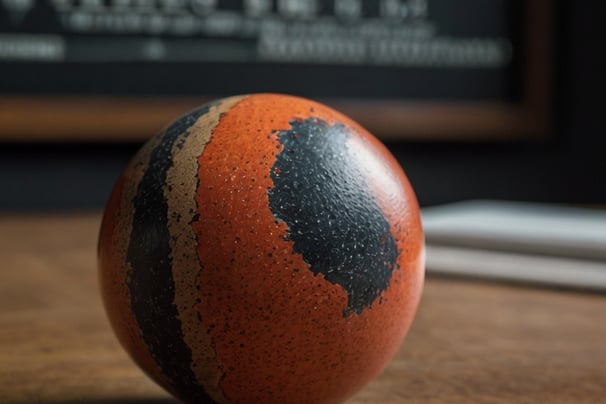
What Are Stress Balls and How Do They Work A Complete Guide
Curious about what are stress balls and how do they work? Our complete guide can change the way you manage stress! This insightful guide dives deep into the mechanics, benefits, and applications of stress balls, offering valuable information that could help you unlock a new way to reduce tension and boost your productivity. Whether you're looking to manage stress at work or improve focus, this guide will provide all the answers you need.
TOYS FOR STRESS RELIEF
1/9/20256 min read
Stress is an unavoidable part of modern life, with sources ranging from personal challenges and professional demands to social pressures. Finding effective ways to manage stress is essential for maintaining mental and physical health.
Among the many tools available for stress relief, stress balls stand out for their simplicity and effectiveness. But what are stress balls, and how do they work? This guide offers an in-depth exploration of these small but powerful tools, detailing their mechanisms, benefits, applications, and more.
Understanding how stress balls can be an integral part of stress management connects with broader topics like the science of burnout and mindfulness at work. These tools not only reduce stress but also help individuals maintain focus, much like the practices highlighted in these studies.
Stress balls can be particularly useful in addressing workplace challenges. With studies emphasizing the role of flexible work arrangements, stress balls act as a supplemental tool to promote well-being in dynamic environments. Additionally, incorporating techniques such as leveraging emotional intelligence to manage workplace stress ensures that stress-relief strategies are both practical and effective.
Finally, for team-based environments, integrating tactile tools like stress balls aligns with the concepts explored in the role of team-building exercises in stress reduction and the connection between stress, relaxation, and collaboration
What Are Stress Balls and How Do They Work? A Complete Guide
Stress balls are handheld objects designed to be squeezed and released, providing a simple yet effective method for relieving tension and improving focus. Made from materials like foam, gel, or rubber, they come in various shapes, sizes, and resistance levels.
The basic mechanism involves engaging the muscles in the hands and forearms during the squeezing motion. This action creates a cycle of tension and relaxation that mimics techniques used in progressive muscle relaxation (PMR), a well-established method for stress management.
When squeezing a stress ball, sensory signals are sent to the brain, helping to interrupt negative thought patterns and create a sense of calm. The repetitive action provides both physical and mental benefits, making stress balls a popular choice for quick and accessible stress relief.


The Science Behind Stress Balls
Stress balls operate on both physiological and psychological principles. Their effectiveness stems from the way they engage muscles, stimulate sensory feedback, and provide a cognitive distraction.
1. Physical Engagement
The act of squeezing and releasing a stress ball works the muscles in the hands and forearms, helping to relieve physical tension. This repetitive motion also improves blood circulation, which can alleviate stiffness and promote relaxation.
2. Sensory Stimulation
The tactile feedback provided by a stress ball stimulates nerve endings in the hands, sending calming signals to the brain. This sensory input can be particularly beneficial for individuals dealing with sensory processing disorders or heightened anxiety.
3. Cognitive Distraction
Focusing on the simple, repetitive motion of squeezing a stress ball offers a mental distraction from stressors. This redirection can break cycles of overthinking or worry, allowing the mind to reset and focus on the present moment.


Benefits of Stress Balls
Stress balls are more than just fun to squeeze; they offer a variety of benefits that extend across physical, emotional, and mental health domains.
1. Stress Reduction
Stress balls provide an immediate outlet for built-up tension. Squeezing them triggers the release of stress hormones like cortisol while simultaneously boosting endorphin levels, leaving users feeling more relaxed and focused.
2. Improved Focus and Attention
For students and professionals, stress balls can be a valuable tool for enhancing concentration. Studies have shown that tactile stimulation from stress balls helps keep the brain engaged, particularly for individuals who benefit from physical activity during tasks.
3. Hand Strength and Rehabilitation
Stress balls are widely used in physical therapy to improve hand strength, flexibility, and coordination. They are particularly beneficial for individuals recovering from hand injuries or surgeries.
4. Anxiety and ADHD Management
For individuals with anxiety or ADHD, stress balls offer a calming sensory input that can help regulate focus and manage feelings of restlessness. The act of squeezing provides a sense of control, which is often helpful during moments of heightened anxiety.
5. Pain Management
In clinical settings, stress balls are used to help patients manage pain and anxiety during medical procedures. Their use has been linked to lower stress levels in patients undergoing treatments like angiography and hemodialysis.


Applications of Stress Balls
Stress balls are versatile tools that can be used in various settings to address specific needs.
For Students
Stress balls have been shown to improve engagement and reduce anxiety in academic environments. A study by Srivarsan, Sridevi, and Preetha (2021) found that students who used stress balls reported lower stress levels and better concentration. They can also help students with ADHD or anxiety manage their emotions during challenging tasks.
For Office Workers
Prolonged periods of desk work can lead to tension in the hands and wrists, contributing to stress and discomfort. Stress balls provide a quick way to relieve this tension while offering a productive outlet for workplace stress. Regular use can also prevent issues like carpal tunnel syndrome.
For Athletes
Stress balls are often incorporated into athletes’ recovery routines. By improving blood flow and hand strength, they aid in muscle recovery and reduce post-training soreness. They also enhance grip strength, which is important for many sports.
In Medical Settings
In healthcare environments, stress balls are used to manage patient anxiety and provide distraction during procedures. They are particularly effective in helping patients undergoing treatments like chemotherapy, dialysis, or blood draws.
For Children and Teens
Stress balls can be a helpful tool for younger individuals dealing with academic pressure, emotional challenges, or sensory processing issues. They are often used in therapy sessions to help children express emotions and develop coping skills.


Types of Stress Balls
There are several types of stress balls, each suited to different purposes:
Soft Foam Balls: Ideal for gentle stress relief and relaxation.
Firm Rubber Balls: Provide greater resistance, making them suitable for building hand strength.
Textured Balls: Offer sensory stimulation, helpful for individuals with sensory sensitivities or ADHD.
Gel Balls with Embedded Objects: Add a unique tactile experience, engaging users who benefit from multi-sensory input.


Limitations of Stress Balls
While stress balls are effective for short-term relief, they are not a comprehensive solution for chronic stress or anxiety disorders.
Individuals with severe or persistent stress may need additional interventions, such as therapy, medication, or mindfulness training.
Studies have also highlighted that while stress balls can reduce subjective feelings of stress, they may not significantly impact physiological markers like heart rate or blood pressure.
They are best used as part of a broader stress management plan.
How to Maximize the Benefits of Stress Balls
To get the most out of a stress ball, incorporate it into your daily routine:
At Work: Use it during breaks to relieve tension and refocus your mind.
During Travel: Keep one in your bag to manage stress on the go.
In Relaxation Practices: Pair it with deep breathing exercises for a calming effect.
In Therapy: Work with a therapist to integrate stress balls into your coping strategies.
Additional Insights: When Stress Balls Might Not Work
While stress balls are effective for many people, they may not suit everyone. Some individuals might find them insufficient for addressing deeper stressors or overwhelming situations.
In these cases, alternative methods such as mindfulness exercises, cognitive-behavioral therapy, or professional support may be more appropriate.


Conclusion: What Are Stress Balls and How Do They Work? A Complete Guide
Stress balls are a simple yet versatile tool for managing stress, improving focus, and enhancing hand strength.
By engaging the muscles and offering sensory stimulation, they provide both physical and mental relief in moments of tension. Their applications are diverse, making them suitable for students, professionals, athletes, and patients alike.
While stress balls are not a cure-all, they are an excellent supplement to other stress management techniques. Understanding how stress balls work and integrating them thoughtfully into your routine can help you navigate life’s challenges with greater ease and resilience.
This guide has shown that these small tools can make a big difference, proving that sometimes, the simplest solutions are the most effective.
We are glad that there are many experts intereested in the subject of stress relief and the tools which may be on our disposal to relieve ourselves of stress. In this article we have tried to evade the peculiarities related to the influence of the stress ball usage on our nervous system and the recovery from stress.
However, we are of an opinion that this text went deep enought in order to understand what stress balls are about. As always, we list the links to the documents that served us in our quest to learn more about these objects and they are a s follows:
• Calm. (n.d.). Stress Balls: Do They Really Work? Retrieved from https://www.calm.com/blog/stress-balls
• ECPAT Global Database. (n.d.). What Are Stress Balls Used For? Retrieved from https://globaldatabase.ecpat.org/files/papersCollection/Citations%3AN0J5/HomePages/What-Are-Stress-Balls-Used-For.pdf
• Suttie, J. (2021, July). When Stress Balls Don’t Work. Psychology Today. Retrieved from https://www.psychologytoday.com/us/blog/opening-the-door/202107/when-stress-balls-dont-work
